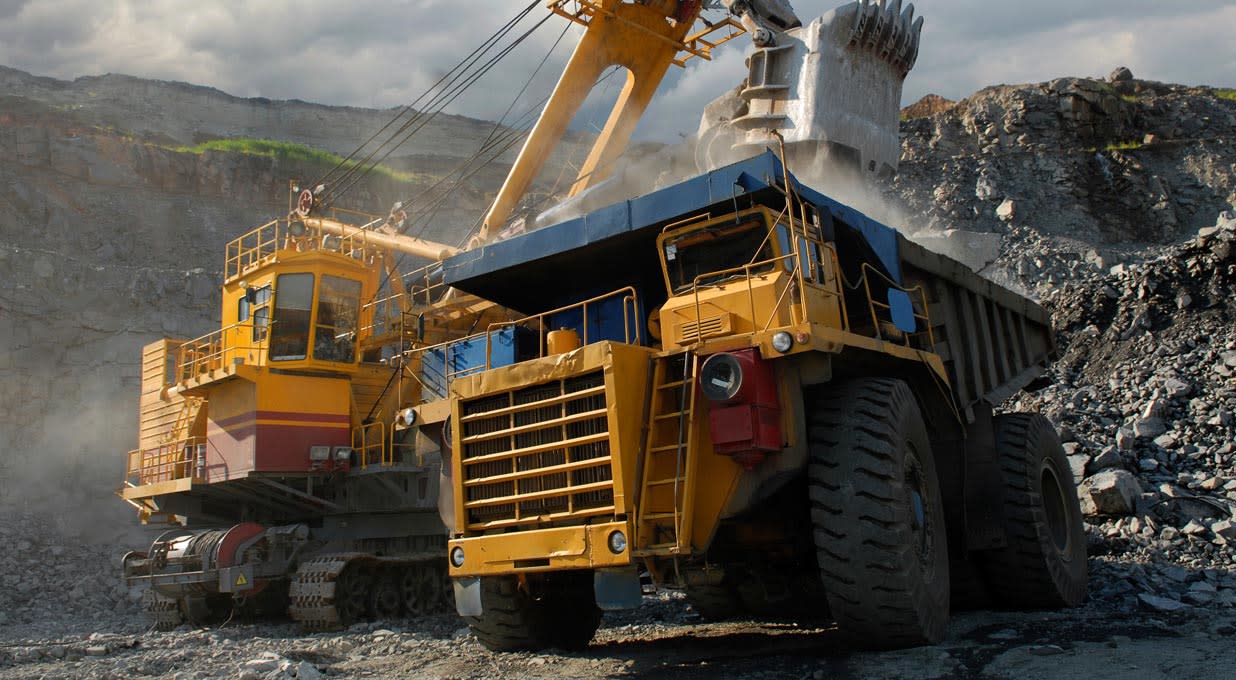BHP reported an 8% drop in full-year revenue to $51.3bn, with underlying cash profit (EBITDA) falling 10% to $26.0bn. Weaker performance was driven by lower iron ore and coal prices, partially offset by improved copper pricing and higher sales volumes.
Free cash flow was down 55% to $5.3bn, reflecting lower profit and a 6% increase in capital expenditure to $9.8bn.
Net debt rose from $9.1bn to $12.9bn over the year. BHP has revised its target range to $10-20bn (previously $5-15bn).
The group announced a final dividend of $0.60 per share, taking the total to $1.10 for the year (down 25%).
The shares rose 1.4% in early trading.
Our view
Mining giant BHP saw full-year profits fall to a 5-year low, as softer iron ore prices weighed on the bottom line. But riding the commodity price wave is part and parcel of being a global miner and, considering the volatile trade and tariff landscape, performance has been strong.
The medium-term strategy involves a push into areas like copper, but iron ore is still BHP's cash cow and highest-margin asset. Demand's been robust in China and India, but the outlook for the former remains a question mark. The Chinese government has put forward a pro-growth mandate, but there’s not expected to be any material change to the demand picture in the near term.
BHP has some aces up its sleeve on the cost side of things. Western Australia Iron Ore, which produces the bulk of the group's iron ore, has some of the world's lowest production costs. The same can be said for the Escondida copper mine in Chile. That feeds into margins that tend to be higher than its peers.
Future investment is weighted toward growth projects in copper and potash (fertiliser). On the copper side, BHP expects demand to be soft in the near term and sees uncertainty around tariffs. But demand is expected to rise steadily over the rest of the decade, and the company is well placed to benefit.
BHP’s copper reserves are some of the largest in the world, and production has been steadily ramping up over the past couple of years. Plans are underway for medium-term expansions and improvements at new and existing sites.
The Jansen project is set to deliver one of the world's largest potash mines. Potash is a little different to the group's other assets - since farmers need it regardless of the economic climate. Unfortunately, first production has now been pushed back to mid-2027, and cost estimates have increased. We are supportive of the project and the diversification it's set to bring, but remain wary that execution risk is high.
Nickel was once a growth lever, but a global oversupply means BHP has written down the value of its operations and suspended production. This shows how quickly a market can change and the risks that miners face when it does.
All in, we think BHP’s low-cost, high-margin assets are attractive and there are several medium-term growth drivers in the mix. But Chinese demand remains a question mark and BHP's premium valuation puts it first in the firing line if economic conditions, and commodity prices, end up worse than expected.
Environmental, social and governance (ESG) risk
Mining companies tend to come with relatively high ESG risk. Emissions, effluences and waste and community relations are key risk drivers in this sector. Carbon emissions, resource use, health and safety and bribery and corruption are also contributors to ESG risk.
According to Sustainalytics, BHP’s management of material ESG issues is strong.
BHP demonstrates strong ESG commitment with a dedicated board committee overseeing sustainability goals. They are notably aiming for a 40% female workforce by 2025. BHP is positioning itself for a low-carbon future by actively seeking out copper and nickel deposits, which are crucial metals for green technologies.
BHP recently settled with Brazilian authorities over a 2015 dam spill, bringing an end to most of the uncertainty - but there are still ongoing lawsuits in other regions to monitor. BHP still owns and operates a small thermal coal business, with plans to wind down operations by 2030.
BHP key facts
All ratios are sourced from LSEG Datastream, based on previous day’s closing values. Please remember yields are variable and not a reliable indicator of future income. Keep in mind key figures shouldn’t be looked at on their own – it’s important to understand the big picture.
This article is not advice or a recommendation to buy, sell or hold any investment.No view is given on the present or future value or price of any investment, and investors should form their own view on any proposed investment.This article has not been prepared in accordance with legal requirements designed to promote the independence of investment research and is considered a marketing communication.Non - independent research is not subject to FCA rules prohibiting dealing ahead of research, however HL has put controls in place(including dealing restrictions, physical and information barriers) to manage potential conflicts of interest presented by such dealing.Please see our full non - independent research disclosure for more information.


